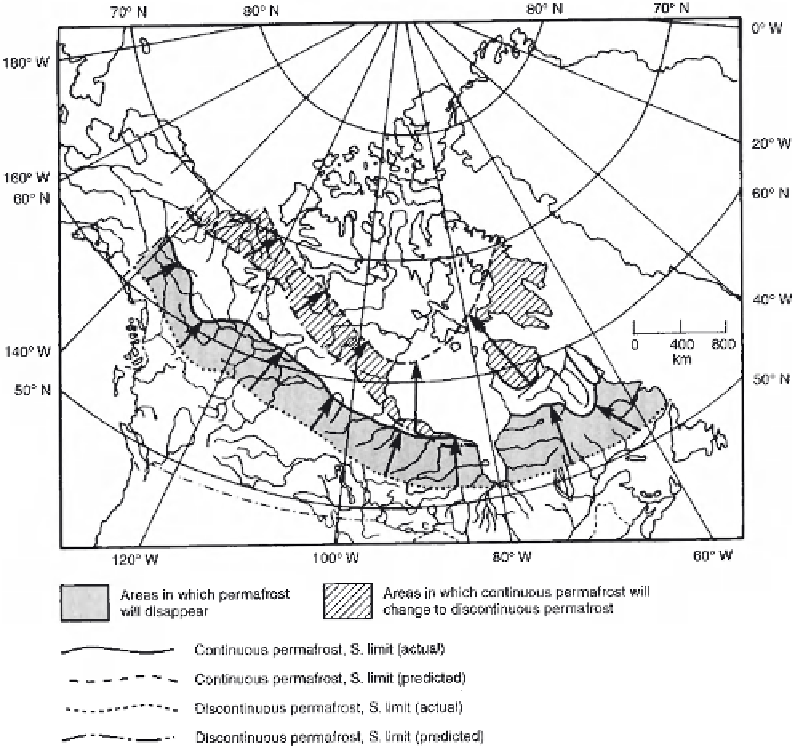Geology Reference
In-Depth Information
Figure 15.3.
Predicted changes in permafrost extent in Canada as the result of a surface tempera-
ture increase of 4 °C. From Atmospheric Environment Service, Canada (1990).
Canadian Arctic because, while cracking has been measured at both Garry Island and
Illisarvik, no cracking is recorded today from ice wedge sites at Inuvik, some 100 km
inland and where temperatures are several degrees warmer than on the Arctic coast.
Anecdotal evidence is also provided by the sound of cracking (Mackay, 1993a). Older
residents along the Western Arctic coast clearly remember the audible sound of thermal
contraction, as fi rst reported by Leffi ngwell (1915) from northern Alaska. However, the
sound of cracking is rarely reported from the mainland today and appears restricted to
more northerly locations on Banks and Victoria islands, where winter temperatures are
colder. Collectively, these observations support the conclusion that the climate of the
Western Canadian Arctic has warmed over the last 100 years and that this is refl ected in
changes in the frequency of occurrence of thermal-contraction cracking.
Other processes likely to be immediately affected by climate warming include thaw-
slumping and active-layer detachments. In the case of thaw-slumps, the rate of ablation
of the ice and the rate of headwall retreat is directly linked to energy inputs from the

